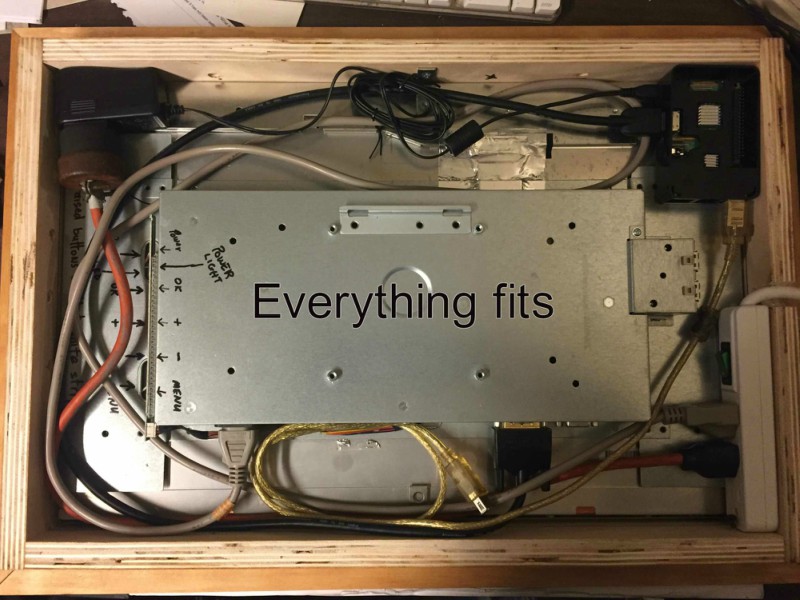Read the statement by Michael Teeuw here.
Magic Mirror fire hazard.
-
Hello, I am new to this forum and I would like to get any input from more experience magic mirror builders. I recently built a magic mirror for my girlfriend and I am worried about the possible fire hazard. I built a wooden frame that encloses both the monitor and the pi. The pi also has a motion sensor connected to it that automatically turns off the monitor after 30 seconds if nothing is detected.
The only “breathing” holes the wooden frame has is in the back where I used a peg board to help with ventilation. However, I am worried this might not be enough. I am not so worried about the heat caused by the monitor since it will be off most of the time, but the pi will be running 24/7 and ready to detect any motion. What do you guys think? Is this a fire hazard or are the holes in the pegboard enough to ventilate.
-
Do you mean you covered the rear of the enclosure with peg board? Personally, I don’t close the rear at all. Some strong tape to secure everything in place is all I use. I don’t have a picture of that but I hang my mirror just like this. Please imagine some tape. :-)
I also have a fan sitting on the Pi that keeps the temp at 39C. I’ve never had a moments worry about a fire hazard.

-
Hey @Mykle1 thanks for your response. So mine looks exactly like this except its covered with a pegboard. What module do you recommend to track temperature of the pi and also what do you think is too hot for a pi?
-
One of these two. The first gives a bit more information
https://github.com/BenRoe/MMM-SystemStats
https://github.com/MichMich/mmm-systemtemperature
And some info on temps
https://forum.magicmirror.builders/topic/1588/how-hot-does-it-get/11
-
Thanks @Mykle1.
-
@Mykle1
So the mirror has been set aside for a while but I finally added the temperature module to it and these are the stats.

I have never left the mirror on for more than a couple hours because I was afraid of the heat. So the uptime of 7 hours is the longest its been on. Even without the pegboard, the pi is giving a temperature close to 80 degrees. Could this be because of a faulty pi? -
Well if it caught on fire you’d be the first… been running 3 of these without issue for a year… I’ve seen no signs of anything that would cause me to worry.
-
Are these the kind of results you get when running the default installation? Some modules will challenge the Pi more than others, thus increasing your system load and your system temps. Several of these together could easily be responsible for your current levels. Personally, I’d be worried about cooking the Pi but not necessarily a fire. Have you employed heatsinks and a fan?
-
The CPU temperature is an easy start, but I don’t think that it gets you very far to assess potential fire hazard. Reason is that this value does not tell you anything about the temperature of the surrounding air. Bigger cases might be able to cope with the CPU’s heat while the air in smaller cases may heat up more/quicker.
Instead, I’d attach a DHT22 sensor and run the mirror for a couple of days (while I’m around). This sensor logs temperature an humidity, is pretty cheap, easy to connect, and well covered by the maker community w.r.t. libraries and documentation. You should place the sensor inside the case at the top, because warm air moves up as we all know.
There are a couple of modules showing the temperature from a DHT22 sensor on the mirror. This is nice, but gives you just a current value. Thus, it might be beneficial to log the data, visualize it in a chart and look at trends, max values over the day, time to cool down after shutdown, etc1.
Please have a look here for tutorial to achieve logging and visualizing DHT22 sensor data using Thingspeak:
- https://www.raspberrypi-spy.co.uk/2015/06/basic-temperature-logging-to-the-internet-with-raspberry-pi/
- https://www.hackster.io/adamgarbo/raspberry-pi-2-iot-thingspeak-dht22-sensor-b208f4
Even simpler, you could periodically write temperature values to a CSV file on the RaspPi’s file system, copy this file manually to a PC, and visualize it in Excel. There are many tutorials for this. The following one seems to be focussed on the bare minimum without too may bells and whistles:
https://learn.adafruit.com/dht-humidity-sensing-on-raspberry-pi-with-gdocs-logging/overviewHave fun!
-
@Mykle1 I have a few modules installed aside from the default ones. I do have a heatsink but no fan. So how does the fan work? Is it constantly on or do you have it programmed to turn on after a certain temp.
